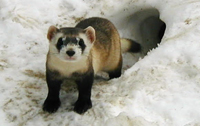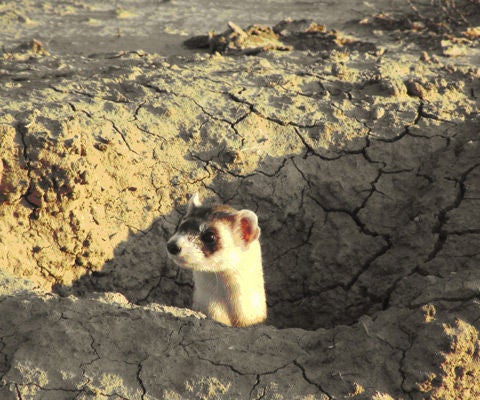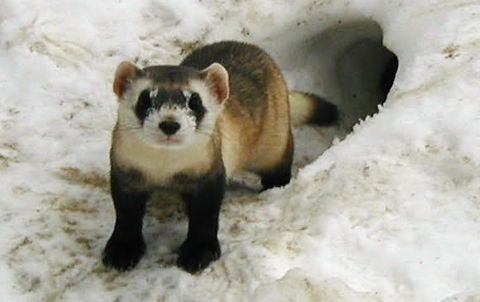
SCIENTIFIC NAME
DESCRIPTION
Of the three species of ferret in the world, the Black-footed ferret is the only one native to North America. They are impeccably cute: cat-like whiskers sprouting from a white muzzle, plush round ears above eyes set into a bandit’s black mask and sturdy legs in black stockings, supporting a sinuous, sandy-coloured body crowned by a black-tipped tail.
RANGE
The Black-footed ferret lives in a habitat of temperate grasslands, commonly known as the Great Plains in the United States and Canada.
HABITAT
They rely almost exclusively on prairie dog colonies for food, shelter and storage; not only do the plump rodents make up nearly all of the ferrets’ diet, but their burrows provide safe, prefab protection from predators and harsh weather and serve as a pantry for caching food. As such, black-footed ferrets survive only where prairie dog populations are sufficiently strong.
DIET
Black-footed ferrets are “obligate” carnivores, meaning they consume one type of prey almost exclusively—in their case, the prairie dog. This meal of choice makes up over 90 per cent of their diet; a black-footed ferret family of four will consume about 763 prairie dogs per year. They may also occasionally eat ground squirrels, small rodents, cottontail rabbits and birds.
BEHAVIOUR
undefinedPRIMARY ECOSYSTEM ROLES

This content is from Hinterland Who's Who, a joint program between the Canadian Wildlife Federation and Environment and Climate Change Canada. For more species fact sheets, videos and sound clips, please visit hww.ca
- 0
- 1








